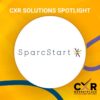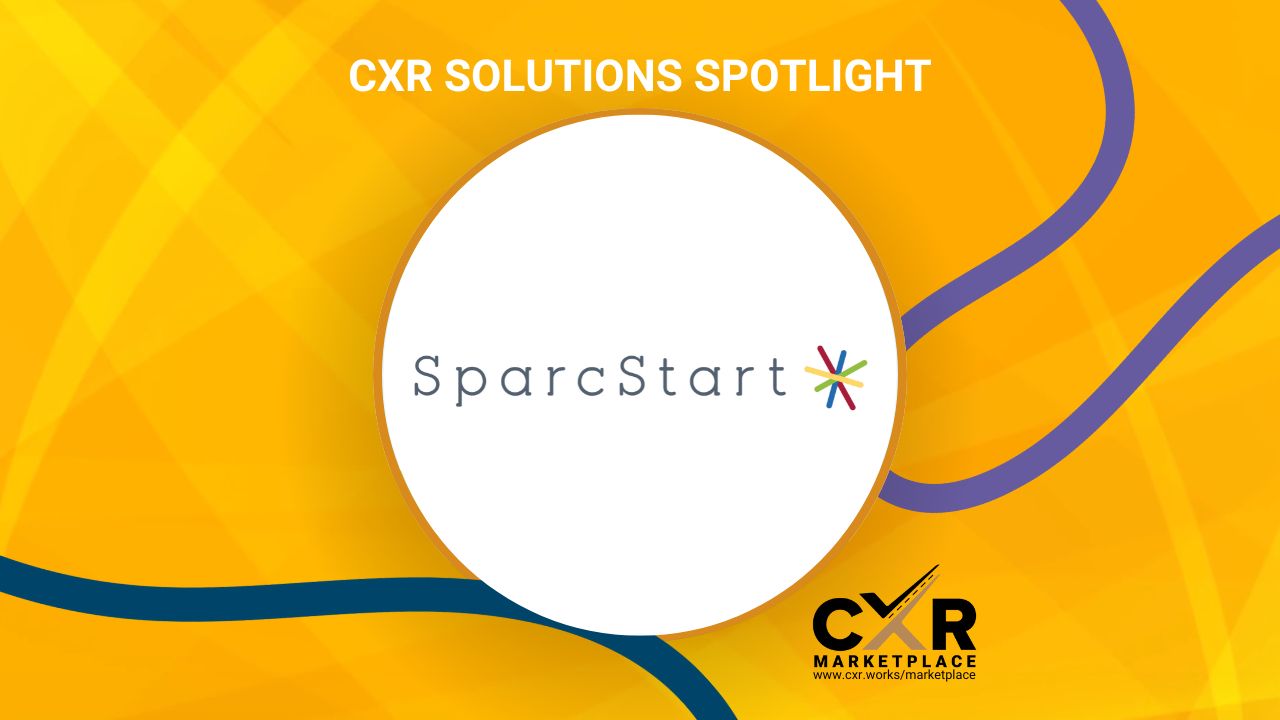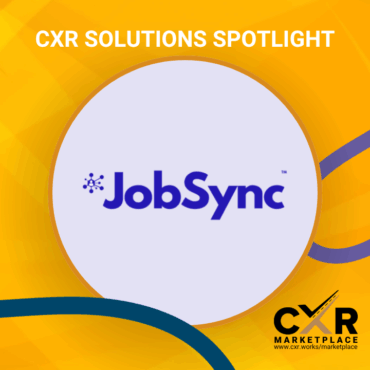Chris Hoyt: For those who’ve just tuned in, that’s great because we just turned on. My name’s Chris Hoyt. I’m the President of CareerXroads. I have with me the co-founder, Gerry Crispin. We’re doing a Spotlight episode. This is a lot of fun. We do these with our solutions partners internally, and today we have one of my favorite people to chat with—Maury Hanigan from SparcStart.
Maury, how are you? Really, really, how are you?
Maury Hanigan: I’m really doing great, and I’m excited about the CXR meeting next week. So, plug for that! The leadership meeting—it’s a highlight of my calendar.
Chris Hoyt: I’m so pumped. All year we bring the heads of TA together, we get the heads of our solutions team together. I get a little fidgety and giddy when we get this close because there’s just so much planned. We have some really cool keynotes, fun activities, a few surprises, and some announcements. It’s going to be a big couple of days—and you’re on the hook for a two-hour keynote, which is very exciting.
Maury Hanigan: Okay, let me get on that.
Chris Hoyt: I think even if you were just getting that sprung on you, you’d be fine.
Maury Hanigan: Yeah, wind me up, I’m ready to go.
Chris Hoyt: We do have a cool topic to talk about today. But before we dive in, do you want to give a little background? Who is Maury Hanigan, who is SparcStart, what does the platform do?
Maury Hanigan: Yeah. I’m Maury Hanigan. I’m a marketer at heart. I started my career at Procter & Gamble and Pepsi doing classic consumer packaged goods marketing. I was appalled at how far behind most HR departments were when it came to marketing, so I flipped over to the HR side and developed a recruitment marketing platform called SparcStart.
What we’ve done is bring together all the individual point solutions for recruitment marketing into one integrated platform—everything from content creation to approval automation, content hub, social sharing, employee advocacy, and analytics. It’s easy, consistent, and gives you one source of truth. We’ve made it scalable so you’re not wasting time uploading, downloading, moving things around, or trying to track stuff.
Chris Hoyt: I love it. One of the hot topics that everybody’s talking about is our friend AI. You can’t have a conversation in talent acquisition anymore without AI coming up.
Maury Hanigan: Exactly. And from an employer brand standpoint—aside from people using AI to generate employee branding content, which I strongly encourage people not to do for a whole bunch of reasons—AI has made it easy to collect and manipulate personal data. That’s created a rash of legislation around data privacy. It’s changing all the time—state by state, sometimes city by city, and globally too. Denmark is doing its own thing. It’s tough for employer brand folks to keep up, but it absolutely applies to them.
We often talk about NIL—name, image, and likeness—like it only applies to college athletes. It doesn’t. It applies to everybody. We all wish we had those big NIL dollars, but the legislation is real and it’s changing fast. It’s a big challenge for employer branding.
Chris Hoyt: As much as I’d love someone to pay me for my signature, you’re raising a really good point. We’ve got folks using AI to generate or alter images. I did a keynote recently, and the company sent me a picture of an employee. I wanted that photo animated for the presentation, so I used AI—full disclosure. I said, “Make them dance with these letters.” It looked great and everyone loved it. But now I’m looking at that and wondering—could that have been an issue?
Maury Hanigan: That’s where it gets tricky. When you convert employee data to biometric data—which includes facial recognition or using AI to manipulate someone’s image, like making them smile or dance—you enter a different regulatory category.
There are specific regulations around using AI to manipulate personally identifiable information, including images of people. Once you convert it to facial recognition data, it becomes biometric data. There are a slew of laws covering that.
Let me be clear: I’m not a lawyer, and I don’t give legal advice. But I want to make sure people are aware of the issues so they can have intelligent conversations with their legal teams. Bring up the questions—should we be worried about this, what policies should we have in place? That’s risk mitigation.
Chris Hoyt: Let’s draw a line here. Take Canva, for example. A lot of recruitment marketing folks use Canva. If I’ve got a picture of Jerry and he looks a little fuzzy or off to one side, I can use Canva’s “enhance” tool—it sharpens, softens, looks great. But you’re saying that’s okay. The issue is when I say, “Make Jerry smile more,” or “Tilt his head,” right?
Maury Hanigan: Exactly. Enhancing a photo is generally okay. But the moment you use AI to alter a facial expression or motion, you’re likely converting it into biometric data. That triggers consent laws, data storage laws, and more.
Some companies use facial recognition to search for employee images and track them down. That’s biometric data. You can do it—but you need the proper consents, and you must store that data on servers in the U.S. if it’s U.S. citizens. There’s a whole set of compliance requirements.
Chris Hoyt: How does this affect companies with only U.S.-based employees? Does that make it easier or harder compared to Europe?
Maury Hanigan: In some ways it’s easier in Europe because GDPR is consistent and clear. It’s also the strictest. You must get specific consent for each asset, not a blanket release during orientation or a paragraph in the employee handbook.
Employees can also revoke that consent. If they do, you have 30 days to comply and take it down. That’s becoming more common in the U.S. as well. Right now, 30 U.S. states have passed data privacy laws. If you have employees in multiple states or major cities, you’re likely affected.
We’re also closely watching the proposed No Fakes Act in Congress, which aims to give people control over their images. It’s meant to prevent manipulation and unauthorized use, but it could impact employer branding too, depending on how it’s worded.
Chris Hoyt: If I’m in employer branding and I have existing assets—photos and videos—what’s the safest next step?
Maury Hanigan: The two things we recommend: First, don’t stop using real employees! They’re authentic and more effective than stock images. Second, implement a platform that handles consent, tagging, tracking, version control—all the backend compliance.
Think of it like driving. There are tons of traffic laws, but you don’t build your own car. You buy one that comes with blinkers and brake lights. That’s what a good recruitment marketing platform should do for you.
Chris Hoyt: I love that analogy. Years ago, people were proud of having organized shared drives full of images. That doesn’t cut it anymore. No tagging, no version control—it’s chaos.
Maury Hanigan: Right. You need a centralized system. Some companies are letting employees create and post their own content, which is great, but what if those videos include other employees who haven’t given consent?
If you’re in a regulated industry like healthcare, it’s even more critical. You have to protect yourself legally and reputationally.
Chris Hoyt: So what does SparcStart do to help solve this?
Maury Hanigan: We’ve built it all into our platform. Consent forms are required before any video is uploaded or recorded. Once uploaded, you can edit, approve, and tag the asset with all the employee names involved.
If Chris Hoyt leaves the company, you search his name and get every asset he appears in—plus where it’s been shared, who shared it, and when.
Assets are automatically tagged with deletion dates based on your data retention policy. You can track usage, edit expiration dates, and control what stays up or comes down. Everything is managed in dashboards, no manual digging needed.
You can also share assets with a click—to LinkedIn, a CRM campaign, a career fair—while maintaining full tracking and audit trails.
Chris Hoyt: I’ve known you for years, and it’s been amazing to watch SparcStart evolve. You used to have tough conversations with legal teams who were nervous about video. Now you’re giving employer brand teams the confidence to say, “We’ve got this covered.”
Maury Hanigan: Exactly. I want brand teams to feel empowered in those legal conversations. They should be able to say, “Here’s how we handle consent, here’s our policy, here’s our audit trail.”
And you can’t retroactively fix things once legislation hits. You have to be ready in advance.
Chris Hoyt: If I’m setting my budget for next year and looking for solutions, this is one I should be considering.
Maury Hanigan: Absolutely. And even if you’re trying to save money. Buying six point solutions is expensive and inefficient. One platform is more cost-effective and delivers better data consistency.
Chris Hoyt: Yeah, and the opportunity cost—your team’s time and headaches saved—is huge. So where should people go if they want to learn more?
Maury Hanigan: Just go to sparkstart.com. That’s Sparc with a “C.” We’ve got a white paper on all this—free to download. We’re not posting it elsewhere because it changes so fast. We’ll keep it updated on the site.
And I’m happy to have conversations—no pressure—just to help people think through what they need before they talk to legal.
Chris Hoyt: You’re one of the most knowledgeable folks in the space. Whether it’s a hotel lobby over wine or catching up online, I always enjoy talking with you.
Maury Hanigan: Same here. Thanks, Chris.
Chris Hoyt: Good stuff, everyone. Visit cxr.works/podcast for more episodes. If you have questions for Maury, Jerry, or me, drop them in the chat. Be sure to check out Spark and grab that white paper—it’s essential reading whether you’re looking for a platform or not.
Thanks for joining us. We’ll see you on the next one.









